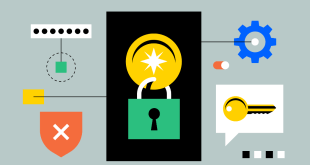Web Application Firewalls (WAFs) play a pivotal role in securing online platforms and applications from malicious attacks. In this comprehensive review, we dive into the world of WAFs, comparing the top contenders in the market. From project implementation to real-life examples and a special focus on Cloudflare WAF, we’ve got you covered.
Introduction
In the ever-evolving landscape of cybersecurity, safeguarding web applications is paramount. Web Application Firewalls act as the frontline defense, protecting against a myriad of threats, including SQL injection, cross-site scripting (XSS), and Distributed Denial of Service (DDoS) attacks. With so much at stake, choosing the right WAF can make all the difference in ensuring a secure online presence.
Understanding Web Application Firewalls
Before diving into the comparison, let’s grasp the essence of Web Application Firewalls. These specialized security solutions monitor, filter, and block HTTP/HTTPS requests based on predefined rules. By analyzing incoming traffic, they identify and mitigate potential threats without affecting legitimate user interactions.
Key Features to Look for in a WAF
Selecting the right WAF requires a keen eye for essential features. Here are some crucial aspects to consider:
Threat Detection Capabilities:
A reliable WAF should excel in identifying known and emerging threats, ensuring robust protection.
Performance:
Balancing security and performance is crucial. Look for a WAF that doesn’t sacrifice website speed.
Ease of Configuration:
User-friendly interfaces and intuitive setup processes save time and minimize human error.
Real-time Analytics:
Access to detailed analytics empowers administrators to make informed decisions and tweak security measures.
Integration Possibilities:
Compatibility with your existing tech stack ensures a seamless implementation process.
Comparative Analysis of Top WAF Solutions
Let’s dive into the battle of the WAF titans and compare some of the leading contenders:
Cloudflare WAF: A Cloud-Based Fortress
As one of the most popular cloud-based WAF solutions, Cloudflare WAF offers impressive performance and scalability. Leveraging Cloudflare’s extensive CDN network, it efficiently filters out malicious traffic while optimizing the delivery of legitimate requests. Its web application firewall ruleset, managed by a team of experts, provides protection against known vulnerabilities and emerging threats.
Akamai Kona Site Defender: Enterprise-Grade Protection
Akamai’s Kona Site Defender caters to large enterprises, delivering enterprise-grade security and performance. With a vast network of edge servers, it effectively absorbs DDoS attacks and enhances website availability during high traffic volumes. The WAF’s machine learning capabilities continuously improve threat detection accuracy, keeping up with the ever-changing threat landscape.
Imperva WAF: Advanced Threat Intelligence
Imperva’s WAF boasts advanced threat intelligence and an extensive database of security rules. By leveraging crowdsourced data, it detects and mitigates even the most sophisticated attacks. Real-time alerts and detailed attack reports empower administrators to respond promptly and efficiently.
Real-Life Examples of WAF Implementation
Let’s explore some real-world examples of WAF implementation to understand its impact better:
E-Commerce Platform
A thriving e-commerce platform faced frequent DDoS attacks, resulting in downtime and financial losses. By deploying a robust WAF solution with DDoS protection, they successfully neutralized the attacks, ensuring uninterrupted service for their customers.
Financial Institution
A prominent financial institution prioritized data security to protect sensitive customer information. Implementing a WAF with comprehensive threat intelligence significantly reduced the risk of data breaches and unauthorized access attempts.
Cloudflare WAF: The Ultimate Shield
As the focus shifts to Cloudflare WAF, its unique features and capabilities warrant a closer look:
Global Network:
Cloudflare’s vast network spans across the globe, reducing latency and ensuring faster website loading times.
Managed Ruleset:
Cloudflare’s team of experts curates the WAF ruleset, offering proactive protection against emerging threats.
Bot Mitigation:
Advanced bot detection and mitigation capabilities safeguard against automated attacks, ensuring a smooth user experience.
User-Friendly Dashboard:
Cloudflare’s intuitive dashboard simplifies WAF configuration and provides valuable insights into website traffic.
Commonly Asked Questions
Q1: Is a Web Application Firewall enough to protect my website?
A: While a WAF is a crucial layer of defense, it’s essential to adopt a holistic approach to cybersecurity. Combine a WAF with other security measures such as regular updates, strong authentication, and secure coding practices.
Q2: Can a WAF impact website performance?
A: Yes, poorly configured WAFs can impact website performance. However, modern WAF solutions, like Cloudflare, strike a balance between security and performance, optimizing website delivery.
Q3: Are cloud-based WAFs better than on-premises solutions?
A: Cloud-based WAFs offer numerous advantages, such as scalability, ease of management, and global coverage. However, the choice depends on specific business needs and resources.
Q4: Can WAFs prevent all types of attacks?
A: WAFs are highly effective against known attacks and emerging threats. However, no security solution can guarantee absolute protection. Continuous monitoring and updates are crucial to staying ahead of evolving threats.
Q5: What are the typical implementation challenges of a WAF?
A: Common challenges include false positives, potential performance impact, and the need for fine-tuning to match unique application requirements.
Final Words
In conclusion, the Battle of the WAF Titans showcases the strengths and features of top WAF solutions. While Akamai and Imperva cater to specific enterprise needs, Cloudflare WAF stands out for its global network, managed ruleset, and user-friendly interface. Remember that a WAF is a critical component, but cybersecurity demands a multi-layered approach to keep your web applications safe from today’s sophisticated threats. Stay vigilant, and invest in a WAF that aligns with your security objectives.
 webfily
webfily



